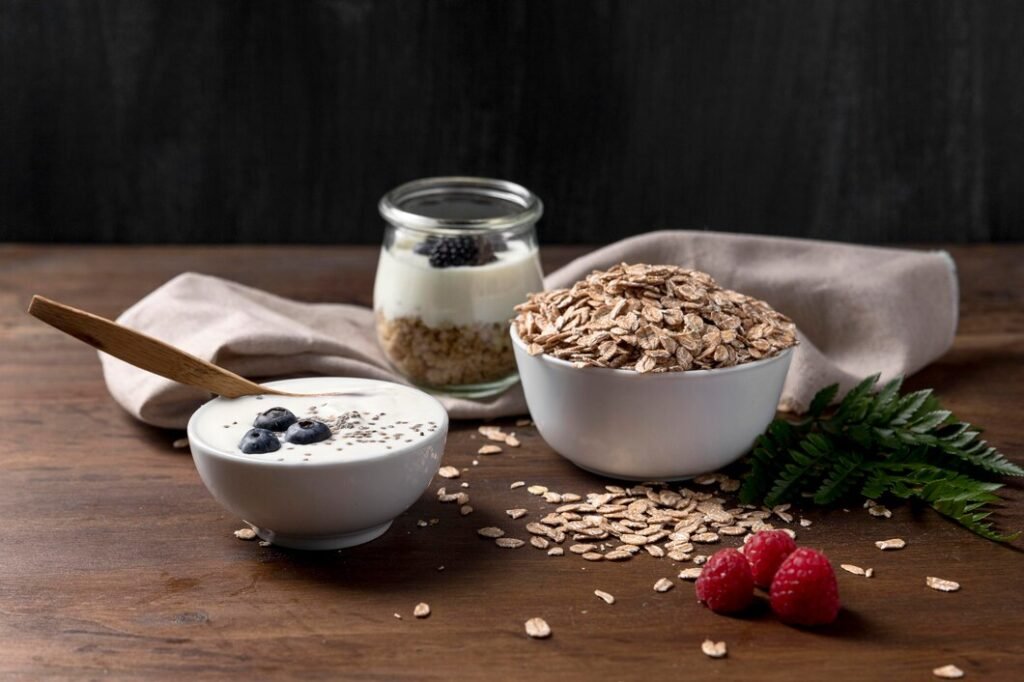In the world of health and nutrition, few topics have garnered as much attention as ancient grains. These nutrient-packed grains are making their way into a wide array of foods, from breads and pastas to, increasingly, breakfast cereals. The term “ancient grains” refers to grains that have remained largely unchanged over millennia, standing apart from modern, heavily cultivated grains like wheat and corn. A recent surge in consumer interest in these grains has even caught the attention of major publications such as The New York Times, with their coverage of “ancient grain in a healthy cereal” reflecting this growing trend.
This article delves into what ancient grains, their health benefits they being increasingly integrated into healthy cereals The focus on these grains highlights their potential to revolutionize breakfast habits, offering consumers a nutrient-rich, flavorful, and natural option to start their day.
What Are Ancient Grains?
Ancient grains are varieties of grains that have been cultivated for thousands of years. Unlike modern grains, these ancient varieties have not been modified through selective breeding and genetic manipulation. Some of the most popular ancient grains include quinoa, farro, spelt, amaranth, millet, teff, and kamut. Many of these grains have their roots in ancient civilizations, from the Andean regions of South America to the fertile valleys of the Middle East.
Ancient grains have withstood the test of time due to their hardiness, nutritional richness, and versatility in cooking. In recent years, they’ve seen a resurgence as health-conscious consumers seek out more natural and whole foods that provide an array of essential nutrients.
The Health Benefits of Ancient Grains
One of the most compelling reasons for the rising popularity of ancient grains is their exceptional nutritional profile. Ancient grains are generally richer in protein, fiber, vitamins, and minerals than refined grains. They often packed with antioxidants, B-vitamins, iron magnesium, which support various bodily functions, including energy production, immune support heart health.
- High Fiber Content: Fiber is essential for digestive health, and ancient grains are a rich source of both soluble and insoluble fiber. This helps regulate digestion, reduces the risk of heart disease, and aids in weight management by promoting a feeling of fullness.
- Protein Powerhouses: Many ancient grains, like quinoa and amaranth, are complete proteins, meaning they contain all nine essential amino acids. This makes them an excellent protein source, particularly for vegetarians and vegans.
- Gluten-Free Options: For individuals with gluten sensitivities or celiac disease, several ancient grains like quinoa, millet, and amaranth are naturally gluten-free, offering a nutritious alternative to traditional wheat-based cereals.
- Rich in Micronutrients: Ancient grains are often rich in important micronutrients like magnesium, iron, and zinc, which are crucial for energy production, immune function, and overall wellness.
Why Ancient Grains Are a Perfect Fit for Healthy Cereals
The rise of ancient grains in healthy cereal products aligns with broader consumer trends toward wellness, sustainability, and holistic health. Breakfast cereals, once criticized for ancient grain in a healthy cereal nyt being sugar-laden and processed, are undergoing a transformation as consumers demand healthier options that still provide convenience.
Here’s why ancient grains are making their way into your cereal bowl:
- Nutrient-Dense Breakfast: Many people struggle to fit nutrient-dense foods into their diets, especially during busy mornings. Incorporating ancient grains into cereals allows consumers to start their day with a powerhouse of vitamins, minerals, protein, and fiber. This ensures sustained energy levels and keeps hunger at bay until lunchtime.
- Diverse Flavors and Textures: Ancient grains bring a unique flavor profile to cereals, often adding a nutty, earthy taste that differs from the blander, refined grains commonly found in traditional cereals. Additionally, their varied textures—from the crunchy bite of farro to the soft chew of quinoa—add a sensory appeal to breakfast bowls.
- Low Glycemic Index: Ancient grains generally have a lower glycemic index than processed grains, meaning they cause slower, steadier rises in blood sugar levels. This makes ancient grain cereals an ideal option for people looking to maintain stable blood sugar throughout the day, reducing spikes that can lead to energy crashes and cravings for unhealthy snacks.
- Sustainability: Many ancient grains are more sustainable to grow compared to modern grains, requiring less water and fewer resources. This has led to a growing interest in these grains from an environmental perspective, as consumers are increasingly seeking out eco-friendly products that align with their values.
Notable Cereals Featuring Ancient Grains
Major food brands and smaller organic companies alike have embraced ancient grains as key ingredients in their cereal offerings. Brands like Nature’s Path, Kashi, and KIND have launched cereal lines that incorporate quinoa, amaranth, and millet, among other ancient grains, to provide a wholesome, minimally processed breakfast option.
For example, Kashi’s Organic Promise line includes a cereal called “Sprouted Grains,” which features ancient grains like spelt, amaranth, and quinoa. The blend offers a complex mix of flavors and textures, making it an appealing option for those looking for a ancient grain in a healthy cereal nyt healthy, natural breakfast. Similarly, Nature’s Path has a line of organic cereals that feature grains like millet and quinoa, highlighting their organic and non-GMO credentials.
Conclusion: The Future of Ancient Grains in Cereal
As consumers continue to prioritize health, sustainability, and nutrient density in their diets, the incorporation of ancient grains into healthy cereals is more than a passing trend. These grains offer a rich source of nutrients, diverse textures, and flavors, making them a perfect match for modern breakfast needs. From their ability to sustain energy to their eco-friendly growing practices, ancient grains have rightfully earned their place in the spotlight.
If you’re seeking to improve your morning routine with a more wholesome and nutrient-ancient grain in a healthy cereal nyt dense breakfast, look for cereals featuring ancient grains. These cereals, now highlighted in leading publications like The New York Times, are proving to be a satisfying and nutritious option for health-conscious consumers everywhere.

